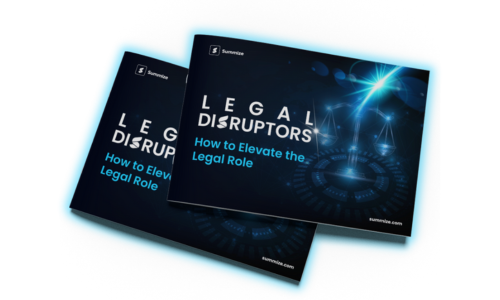Summize in conversation with Phil Simon
In this episode, we discuss the importance of embracing collaboration tools within the workplace with Phil Simon, author and workplace guru.
September 1, 2023
December 3, 2025
In this episode of our Legal Disruptors podcast, Summize's CEO Tom Dunlop chats with Phil Simon, future of work guru and author of multiple books, including ‘Reimagining Collaboration’, on the importance of embracing collaboration tools within the workplace, how best to use them and how other technology that integrates with tools such as Teams and Slack can further benefit businesses.
From data guy to collaboration expert
Phil’s career didn’t start in HR or organizational psychology, far from it. With a background in data and enterprise technology, he spent decades watching workplace tools evolve, often out of frustration with how slowly organizations adopted them. Even as a professor, he pushed students to collaborate via Slack while his own colleagues clung to email.
Over time, that frustration became fuel. Phil now writes, consults, and speaks internationally on how technology shapes modern work, and why many businesses are still stuck in the past.
Collaboration tools aren’t email 2.0
One of the key ideas Phil champions is that most organizations misunderstand tools like Slack, Teams, Zoom, and Notion. They treat them as replacements for email, when in reality, they’re something completely different.
Phil explains that these platforms work best as hubs (central places where work happens), connected to spokes like project management tools, document systems, CRMs, design tools, or legal intake solutions. When businesses stitch these tools together through native integrations, low-code automation (Zapier, Make, Power Automate), or APIs, they unlock far greater efficiency and reduce context-switching, one of the biggest killers of productivity.
The average organization uses 88–176 apps, depending on size. Without proper integration, that’s chaos.
Why some people resist, and how to move them forward
One of the most entertaining parts of Phil’s book, Reimagining Collaboration, is the cast of characters: Holdout Henry and Emily the Email Addict - fictional versions of real people he’s encountered.
These are the colleagues stuck in old habits, refusing to switch from email to modern tools. Phil breaks down three groups:
- People who get it
- People who don’t get it but want to get it
- People who don’t get it and never will
Group 3, he says bluntly, may not fit into today’s workplaces. Their resistance creates fragmented communication, lost knowledge, and inefficiency. For managers, identifying these personas, and hiring for collaboration proficiency, is now essential.
What the future looks like
Phil believes we’re in the early stages of a major shift. Collaboration hubs will:
- Get smarter, powered by AI models like ChatGPT and Claude
- Predict how you should communicate based on past patterns
- Warn managers when employees disengage
- Detect toxic communication
- Automate workflows without a developer
- Gradually remove the need for external tools like Zapier
- Become more immersive through augmented, virtual, or mixed reality
Slack clips, Zoom clips, Microsoft Loop, these are hints of where things are heading. And the more organizations keep their information inside the hub, the more powerful these AI assistants will become.
As Phil puts it, "AI can’t help you if all your information lives in email inboxes."
What’s next for Phil and for collaboration technology?
Phil has new books brewing, continues consulting and speaking, and expects The Nine to open even more doors. As for the next big breakthrough? He believes generative AI was the breakthrough, but its ripple effects are just beginning. The next five to ten years will be shaped by multiple converging forces: AI, blockchain, disbursement, employee empowerment, automation, and more.
This episode is packed with practical, forward-looking insights on modern collaboration, and why businesses that cling to email-centric workflows are setting themselves up to fail. Watch the full episode above to hear Phil’s perspective on the tools, behaviors, and cultural shifts shaping the next era of work.
And learn from even more of our Legal Disruptors, by exploring our Legal Disruptors Hub.
Discover even more!
Explore more about contracting and CLM in our ultimate contract guides








